My wife and I recently spent an exceedingly pleasant few days at a guest house in Cornwall. We had been to England’s most westerly county before on a few occasions, but not this far south, quite close to Land’s End. I had, but not since before I was ten. A couple of towns in the upper part of the county have seen tourism flourish, perhaps over so, due to the popularity of television programmes Doc Martin (Port Isaac) and Beyond Paradise (Looe). Given the lure of this particular part of the world, maybe the last thing the locals could do with would be another TV promotion.
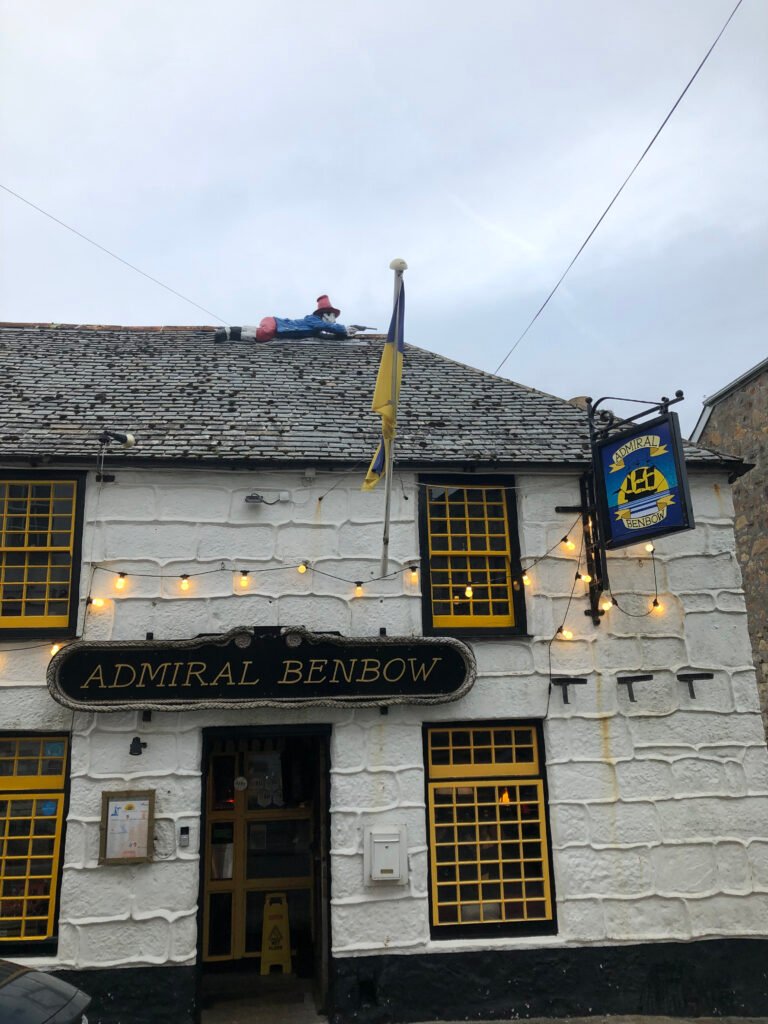
We stayed at Penzance in West Cornwall, a pleasant market town with steep streets and frequently with steep steps rising from them to whatever premises you were minded to be stepping into. In fact, come to think of it, the only kinds of premises to which this might not apply are the town’s abundant supply of public houses. I have no objection to this but in Penzance the next-door neighbour to a pub is not uncommonly another pub. Even in peak holiday season, which this assuredly wasn’t, it is hard to imagine they could all be full. These establishments take in some history, too. For example, the Admiral Benbow on Chapel Street, a whole four doors down from the Turks Head (no apostrophe), has been “serving pirates, smugglers and rum since 1695”. (On the other hand, nearby St Ives has a ‘Teetotal Street’.) I am sure that many if not all the town’s drinking establishments would be a suitable place to sample the produce of the nearby Polgoon vineyard and orchard.
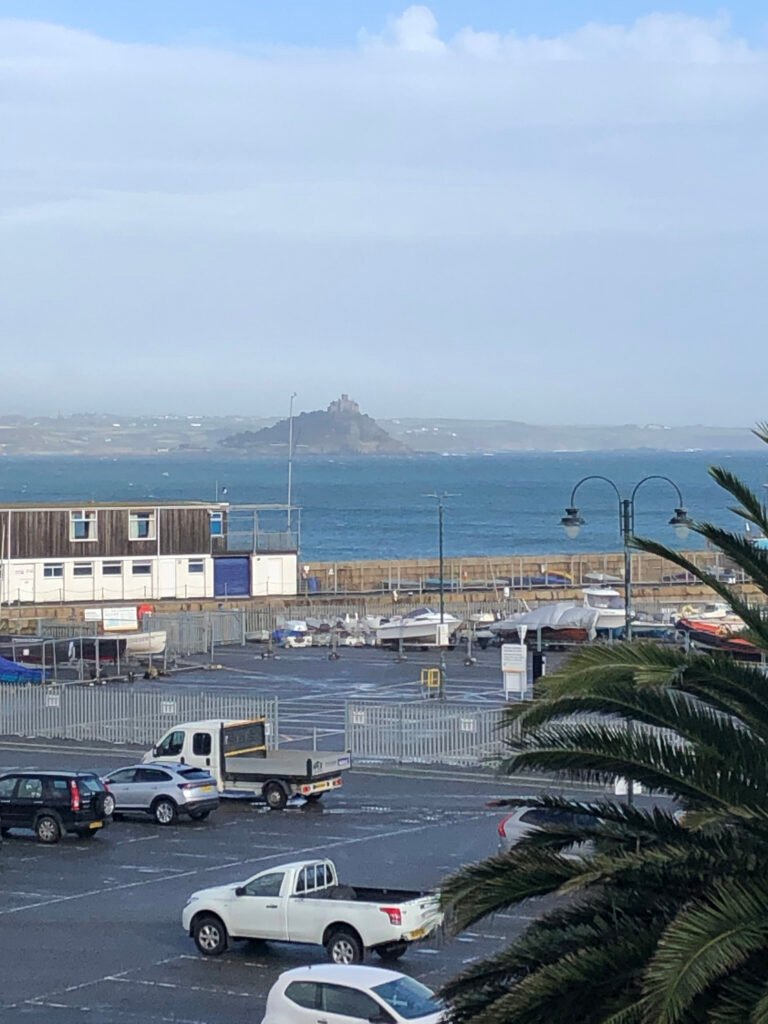
At a slightly different cultural level, Penzance has two art-deco style cinemas. The aforementioned Chapel Street is an ancient thoroughfare – as is suggested by the Admiral Benbow’s heritage – with an array of intriguing-looking shops. The town is on the coast (the journey into the train station runs right beside the sea); specifically, Mounts Bay. Part of the attraction is the imposing presence of St Michael’s Mount, rising up from the waters.
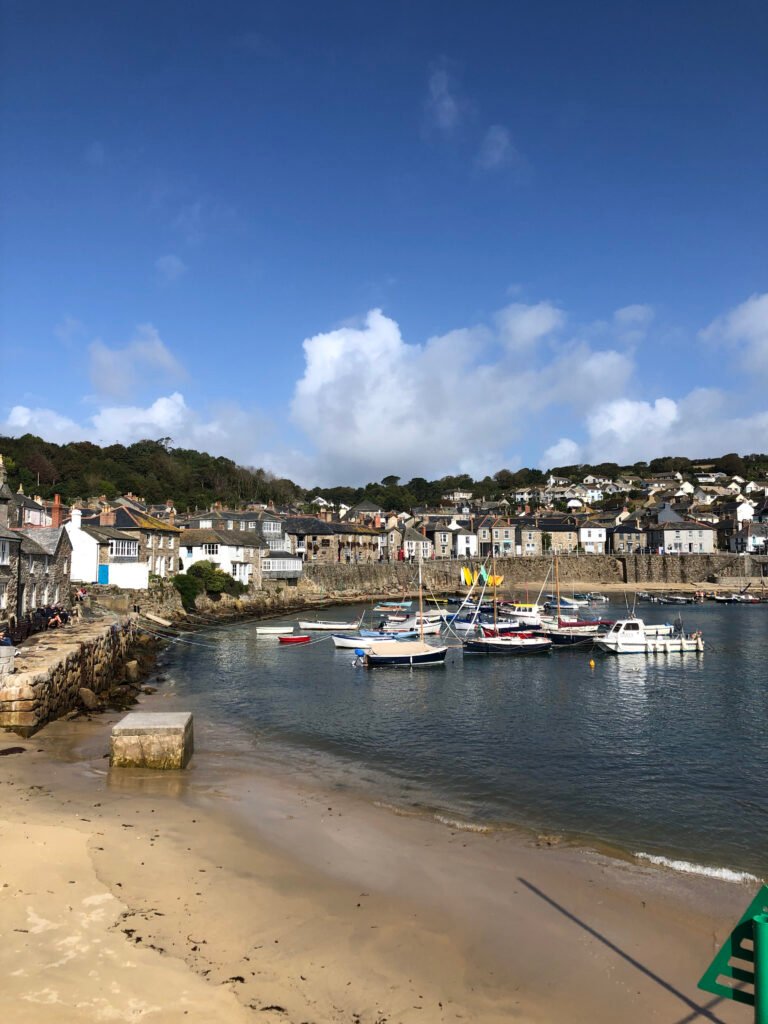
On the far side in the opposite direction is Newlyn, the largest fishing port in England. A short bus ride from there is the delightful harbour village of Mousehole, pronunced ‘Mowzall’. Though this is a county blessed with a whole load more romantic-sounding names than that: Tintagel, Kynance, Lamorna and Marazion and more. Which brings us to what, probably for most people, is the highlight of this region.
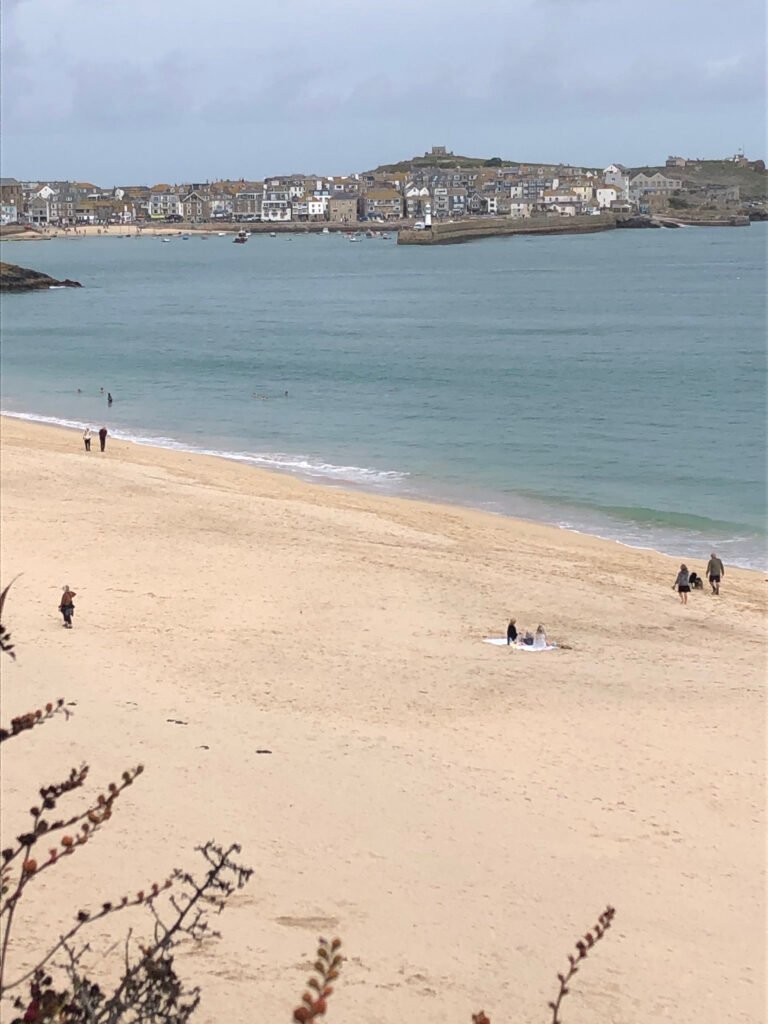
The focal point of St Ives is its harbour, shaped by its granite piers. Stretching out from there into the village are cobbled streets and fishermen’s cottages, restaurants and craft shops. Above all, it could be argued, there is the town’s connection to the world of art. That and tourism have gradually replaced fishing as the main business of St Ives. Its status as a burgeoning bastion of the arts was sealed in 1993 with the opening of the Tate St Ives gallery, part of which includes the Barbara Hepworth Museum, a showcase for the eminent sculptress who lived and worked in the town.
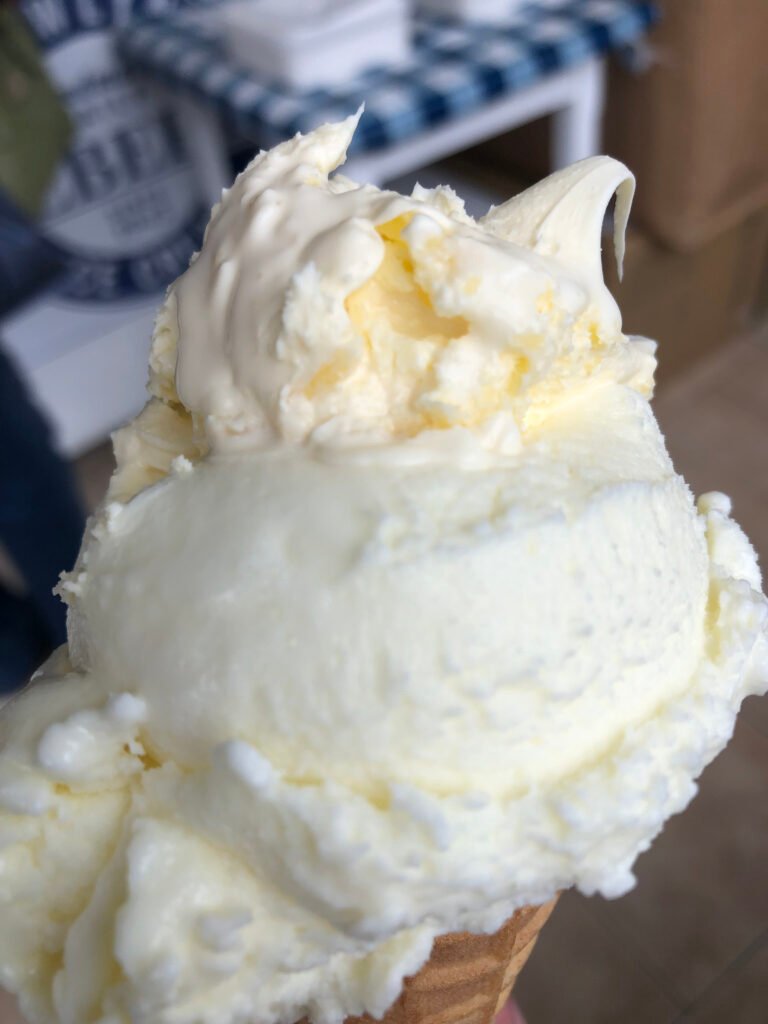
We did walk a bit of the (now notorious!) Salt Path, the section between St Ives and Carbis Bay. The eponymous hotel in the latter village underwent a major refurbishment and expansion in order that it could host the G7 summit in 2021 (see the photo on the home page). The beach is as glorious as it has always been. Well, as it has always been in my nine-year-old mind.
